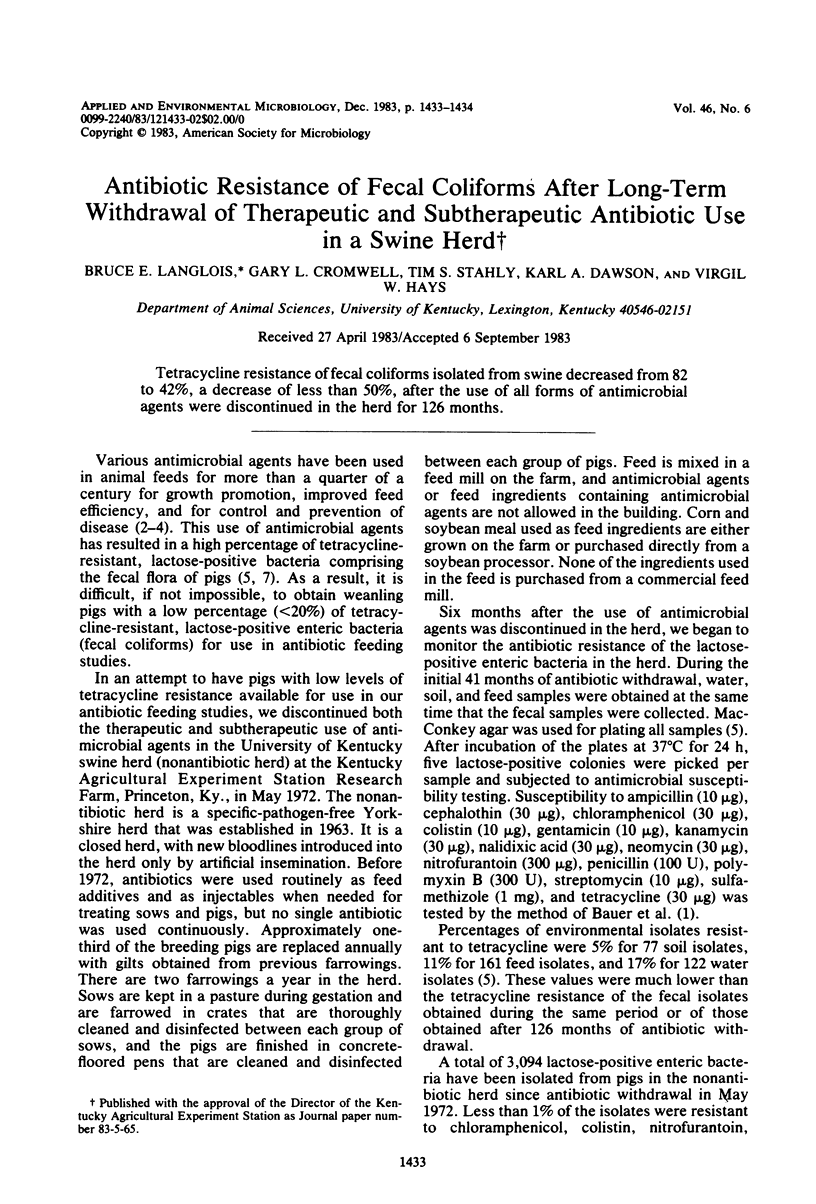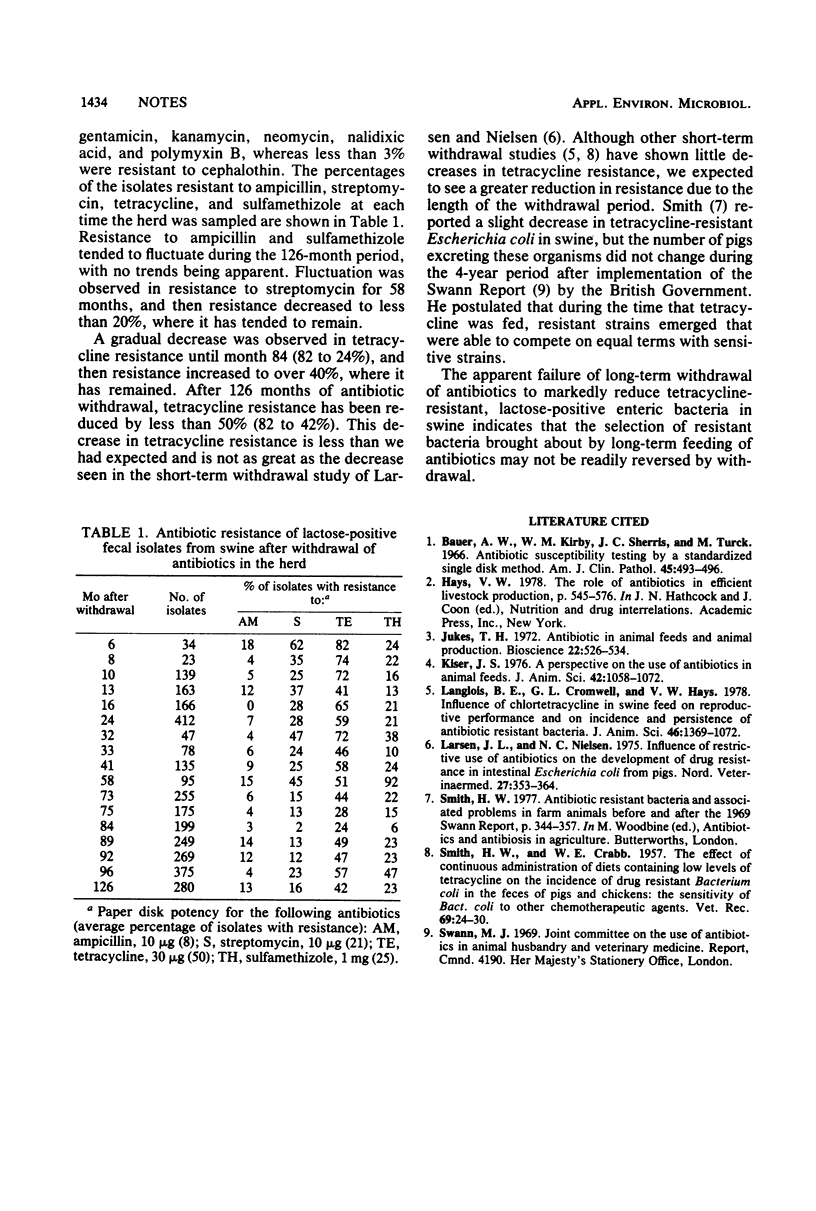Abstract
Tetracycline resistance of fecal coliforms isolated from swine decreased from 82 to 42%, a decrease of less than 50%, after the use of all forms of antimicrobial agents were discontinued in the herd for 126 months.
Full text
PDF

Selected References
These references are in PubMed. This may not be the complete list of references from this article.
- Bauer A. W., Kirby W. M., Sherris J. C., Turck M. Antibiotic susceptibility testing by a standardized single disk method. Am J Clin Pathol. 1966 Apr;45(4):493–496. [PubMed] [Google Scholar]
- Kiser J. S. A perspective on the use of antibiotics in animal feeds. J Anim Sci. 1976 Apr;42(4):1058–1072. doi: 10.2527/jas1976.4241058x. [DOI] [PubMed] [Google Scholar]
- Langlois B. E., Cromwell G. L., Hays V. W. Influence of chlortetracycline in swine feed on reproductive performance and on incidence and persistence of antibiotic resistant enteric bacteria. J Anim Sci. 1978 May;46(5):1369–1382. doi: 10.2527/jas1978.4651369x. [DOI] [PubMed] [Google Scholar]
- Larsen J. L., Nielsen N. C. Indflydelse af restriktiv antibiotika-anvendelse på Escherichia coli floraens resistensforhold i svinebasaetninger. Nord Vet Med. 1975 Jul-Aug;27(7-8):353–364. [PubMed] [Google Scholar]


